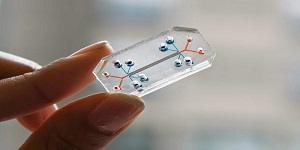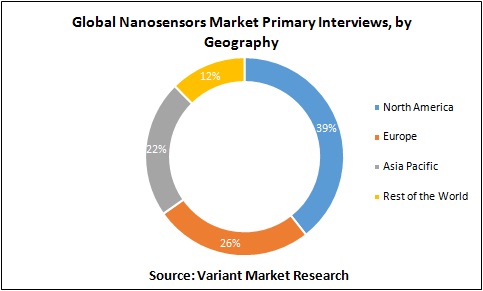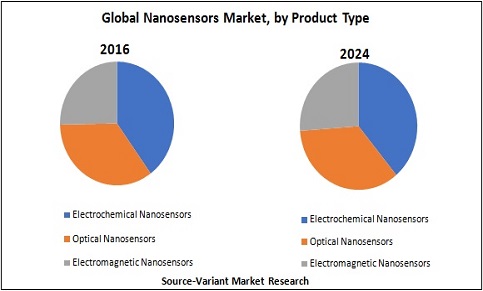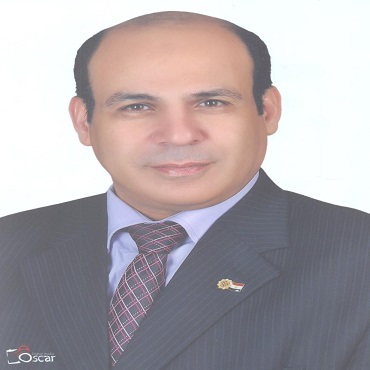
Nanosensors 2020

Theme: Innovative Researches in Sensing Technology by using Nanotechnology
We are delighted to invite all the participants globally to attend the International Conference on Nanosensors and Electronic Instruments which is going to be held on February 17th and 18th, 2020 in Phuket, Thailand. Nanosensors 2020 Conference gathers all the global leaders in sensory and relevant fields to share their research at this exclusive scientific program. Nanosensors Conference is aimed to identify advances in sensory technology which broadly cover chemical, electromechanical, biological and electromagnetic nanosensors. The major applications segments are in field of biomedical, healthcare, homeland defence, automotive-aerospace and agricultural industry. Nanosensors Conference is expecting members from around the world and the two day conference will incite plenary sessions, keynote speakers, poster and oral presentations. This congress gives two days of vigorous discussions on recent advancements, new strategies and new techniques for development of new sensory materials for global requirements.
Importance:
Nanosensors have enlarged specificity over sensors made up of regular materials. As a result they operate at an identical scale as natural biological processes, permitting functionalization with biological and chemical molecules.
Nanosensors have varied applications within environmental field. Nanosensors can initiate the ways in which air and water quality is measured because of their size, quickness, and accuracy of measurements. The ability of Nanosensors to live air quality, significantly for pollutants, could be a new approach to air sampling.
Nanosensors are now based on various advanced materials (nanoshells, nanopores, quantum dots, carbon nanotubes, etc.). It can furthermore allow for building an entirely new integrated device which will provide a preliminary base for intelligent sensors. Advances in this field can open an unprecedented perspective for the Nanosensors application in molecular level diagnostics and treatment instruments in medical science.
Who will attend?
The Nanosensors 2020 is especially intended for Entrepreneurs, investors, venture capitalists, and other readers with a need to know where the Nanotechnology market is headed in the next 5 years. The Nanosensors 2020 conference will be useful to participants from both the Industry and Academic working in all the domains of Nanotechnology mainly focusing on Nanosensors, but all other target audience includes:
- Nano Technology and Nano Materials Faculty
- Health Care Service Providers
- Nano Robotic Technologist
- Nano Science and Nanotechnology Students, Scientists.
- Business Entrepreneurs
- Innovators
- Industry Mentors
- Directors of Nanotechnology Companies
- Nanotechnology Engineers
- Members of different Nanotechnology and Nanomaterials science associations.
- Exhibitors and Sponsors
- Nanotechnology and Nanomaterials researchers.
- Research Associates
- Students
Session 1. Nanosensors and Mechanics:
The trends of miniaturized products are driving the market growth, miniaturized semiconductors and sensor has fuelled the nanomaterial applications for sensor manufacturing giving rise to nanosensors. Nanoelectromechanical Sensors (NEMS) use nanosized mechanical resonator of nanostructured materials. Some higher order continuum mechanics has been developed for size-effects of the material structure which are applicable for NEMS and nanosensing applications. Take in portion of the fundamental mechanism of different Nanosensors by going along with us at Nanosensors 2020.
Session 2. Nanoscale Electronics:
Nanoelectronics is one of the major technologies in the field of nanotechnology. It plays a vital role in the field of electronics and engineering. This term includes a diverse set of materials and devices, with the common characteristics, they are so small that their inter-atomic interactions and quantum mechanical properties need to be studied extensively. The major research are includes the development of carbon nanotube sensors, the application of current methodology is to assess material used for 3D printing. To discover and explore into recent researches and on-going projects in different regions, joim your peers at Nanotechnology Conference 2020.
Session 3. Nanosensors in Chemical Applications:
Nanosensors are able to detect very small amounts of chemical vapours. Various types of detecting elements like carbon nanotubes, palladium nanoparticles and Zinc oxide can be used in nanotechnology based sensors. Detection of an even very low concentration of chemical molecule is possible through nanosensors. The main motive is to have small, inexpensive sensors that can sniff out the target chemical to provide signalling. Join your companion at Asian Nanoengineering Conference 2020 to interface and offer thoughts regarding chemical sensors and to know the advantages associated with it.
Session 4. Nanosensors and Food-Agriculture Industry:
Food safety is a vital issue in food and agricultural industry, it directly relates to the influence of food on human health. Public health concerns about chemical residue and synthetic additives have driven the need to develop sensitive and reliable methods to detect those food hazards which include the developments of nanosensors with modern Information and Communication Technologies and enables novel and online ways for different components detection with high accuracy. Various types of nanosensors are being developed for food inspections i.e detection of external and internal conditions in food packaging, anions and organic compounds in food, heavy metals, microbial cells, toxins, etc. Go along with us to extend your insight on this session at Nanoparticles and Nanomaterials Conference.
Session 5. Medical Applications of Nano-Biosensors:
The development of nano-bio and info-tech based sensors capable of wireless communication will change the way we treat patients with chronic disease. Various biosensors can be integrated into smart-fabrics and independent e-bandaid sensors will be able to monitor a patient’s condition in real time. The most useful and important type of nanosensors is biosensors, they high abilities in cancer, mutation and genetic disorder diagnosis. Nano drug delivery syatem and nanomeds are new and are in the part of developing technologies. Utilize this Biosensor Conference 2020 as the scientific stage to find out the powerful techniques for disease identification and cure.
Session 6. Bioelectronics and Biomaterials:
The emerging field of bioelectronics includes the field of research that works to establish a synergism between biology and electronics. Nanoscale semiconductor devices will upraise a novel understanding for biological system and the fabrication methods that have been used for creating these devices are typically not compatible with the modern semiconductor manufacturing technique and the large scale integration of them in advance problematic. Give us a chance to meet and trade information over new biomaterials and the most recent on-going ventures in this field at the Nanomaterial Conference 2020.
Session 7. Nanoelectronics for space exploration:
Space exploration have requirements of advance and miniaturised sensors, instruments, electronics and various other components in terms of mass, power consumptions and resistance to various radiations. Gas-sensing needs in celestial or planetary exploration and air-quality monitoring for cabin-crew are required to be met by nanosensing instruments. Nanomaterials can be used to construct nanosized vapour/gas sensors along with lab-on-a-chip biosensors for water monitoring and crew health monitoring. Let’s together meet on Nanosensors 2020 Conference and make a discussion on the following session.
Session 8. Biological Signals & Nanosensors:
Various types of detecting elements like carbon nanotubes, palladium nanoparticles and Zinc oxide can be used in nanotechnology based sensors. The detecting elements change their electrical characteristics, like as capacitance or resistance when they absorb a chemical molecule. Detection of an even very low concentration of biological molecule is possible through nanosensors. The main motive is to have small, inexpensive sensors that can sniff out the target biological compounds to provide signalling. Utilize this Nanosensors Conference as the logical stage to find out about the biological signalling pathways and their ways of detection using nanosensors.
Session 9. Environment Monitoring with Nanosensors:
Nanomaterials are well known to possess excellent electrical, optical, thermal, catalytic properties and strong mechanical strength, which offer great opportunities to construct nanomaterials-based sensors or devices for monitoring environmental contaminations in air, water and soil. Various nanomaterials, such as carbon nanotubes, gold nanoparticles, silicon nanowires and quantum dots, have been extensively explored in detecting and measuring toxic metal ions, toxic gases, pesticides, and hazardous industrial chemicals with high sensitivity, selectivity and simplicity. Join us at Asian Nanosensors Conference to know more about the recent advances in this direction.
Session 10. Nanosensors for Military advancements:
Multidiscipline efforts to develop nanobased components for advance weaponry, aviation and autonomous ground/air system applications have already been started. The main is on the developments of novel technology to upgrade the weaponry. Nanotechnology holds solid guarantees for use in the guard business. Current reasoning is that nanotechnology can be utilized as a part of two principle routes by troopers. The first is scaling down of existing gear to enable it to be littler, as well as lighter, utilize less vitality and be all the more promptly concealable. The second is to create and adjust new materials for military purposes. Nanosensors Conference 2020 focuses on the use nanoscience and technology to keep the country and its citizens safe from threatsTrack.
Market Analysis
Global Nanosensors Market is expected to reach $5,550 Million by 2024 from $85 Million in 2016, growing at a CAGR of 68.7% from 2016 to 2024. Nanosensors are mainly used in healthcare or biomedical sector, and also help in production of other nanoproducts.
Global Nanosensors Market Size and Forecast, 2015 – 2024 (US$ Million)

The global nanosensors market has been segmented into product type, application and geography. On the basis of product type, the market has been divided into optical nano sensors, electrochemical nanosensors, and electromagnetic nanosensors.
Global Nanosensors Market, Region Wise

Based on geography, global nanosensors market is segmented into North America, Europe, Asia-Pacific, and Rest of the World (RoW). North America is further bifurcated in U.S., Canada, and Mexico whereas Europe segment consist of UK, Germany, France, and Rest of Europe. Asia-Pacific is segmented into India, China, and Rest of Asia-Pacific while RoW is bifurcated into South America, Middle East, and Africa.
Global Nanosensors Market, by Product Type

(In Reference form Variant Market Research, Market Research Future)
Scope of Nanosensors 2020:
These sensors exhibit features such as low cost, compact size, increased reliability, and reduced power consumption, which is further projected to broaden opportunities for the nanosensors market. Technological advancement would generate new opportunities for the marker in the upcoming years. Growing affordability of nanosensors owing to rising demand for cost-efficient and optimum quality products in the developing regions is anticipated to increase demand over the coming years.
Key Market Trends:
Healthcare and the biomedical sector is the largest market for nanosensors due to the requirement for accurate, compact and portable diagnostics sensing systems. With the increase in the rate of patients having diabetes, the government in various countries are investing in developments of diagnostic techniques. The Ministry of Health Labour and Welfare (MHLW) in Japan has granted national reimbursement for the FreeStyle Libre glucose monitoring system in August 2017. This stimulated nanosensor adoption in the healthcare and biomedical sector. Regulatory factors such as toxicity, molecular characteristics, and secondary reactions releasing toxicants affect the medical market, so companies that provide products that do not require FDA clearance have better to succeed in the market.
Industry News:
• Scientists have leveraged the properties of graphene in order to develop next generation Nanosensors for energy and water.
• A research study found that nanosensors can be integrated with smart sutures which will help in providing critical health information.
Scope of the Global Nanosensors Market:
• Product Type Segments
• Optical Nano Sensors
• Electrochemical Nano Sensors
• Electromagnetic Nano Sensors
• Application Segments
• Automotive and Aerospace
• Homeland Defense and Military
• Biomedical and Healthcare
The key players operating in the market:
• Robert Bosch GMBH
• Analog Devices INC
• Nippon Denso Corp.
• Toshiba Corp.
• Lockheed Martin Corporation
• Honeywell International
• Agilent Technologies Inc.
• Omron Corp.
• Altair Nanotechnologies Inc.
• Micro-Tech Scientific Inc.
Global Universities and Institutes:
America Region
• Texas State University, USA
• Virginia Commonwealth University, USA
• Saint Francis University, USA
• Northeastern University, USA
• University of Central Florida, USA
• University of New Mexico, Mexico
• Carleton University, Canada
• University of Alberta, Canada
• University of Guelph, Canada
• Universidade Federal do Rio de Janerio, Brazil
Europe Region
• Bangor University, UK
• Swansea University, UK
• University of Nottingham, UK
• University of Feiburg, Germany
• Utrecht University, Netherlands
• Delft University of Technology, Netherlands
• University of Rome Tor Vergata, Italy
• Polytechnique University of Milan, Italy
• University College of Dublin, Ireland
• Danube University Krems, Austria
Asia Region
• Xian Jiao tong-Liverpool University, China
• City University of Hong Kong, Hong Kong
• University of Tsukuba, Japan
• Waseda University, Japan
• SRM University, India
• Amrita Institute of Medical Science, India
• Indian Institute of Technology, Madras
• Indian Institute of Technology, Guwahati
Middle-East Region
• KAU University, Saudi Arabia
• King Abdullah Institute of Nanotechnology, Saudi Arabia
• Ben-Gurion University, Israel
• Hebrew University of Jerusalem, Israel
• Istanbul Medeniyet University, Turkey
• Iranian Nanotechnology Laboratory Network, Iran
List of Global Research Centres:
• New York University. NYU Materials Research Science and Engineering Centre, USA
• Northwestern University, USA
• Pennsylvania State University, USA
• University of New Mexico - Center for High Technology Materials (CHTM) , Mexico
• IST Austria, Austria
• Austrian NANO Initiative, Austria
• United Nations Institute for Training and Research(UNITAR),Switzerland
• Centre for Research in Nanotechnology & Science (CRNTS), IIT Bombay
• Centre of Nanotechnology, IIT Roorkee
• IBM Semiconductor Research and Development, Bangalore
• Centre for Nanoscience and Nanotechnology, Bharathidasan University, Tiruchirappalli
• Australian Research Council - Center of Excellence for Nanoscale BioPhotonics, Australia
• Commonwealth Scientific and Industrial Research Organisation(CSIRO) , Australia
• Egypt Nanotechnology Research Center, Cairo University, Egypt
• Bilkent University - Master of Science in Materials Science and Nanotechnology, Turkey
• Nanowerk Nanotechnology Research Laboratories, Saudi Arabia
Conclusion
Nanosensors is still in its infancy but a range of products is now reaching the market. In addition to probes for atomic force and scanning probe microscopy, innovative chemical, gas and biosensors are having a growing impact. Many of the supply companies are US based with strong links to universities and have frequently raised significant venture finance and subsequent funds from government agencies involved with defence, homeland security and healthcare. Several of the world's large, high technology companies are also pursuing nanosensor developments.
- Nanosensors and Mechanics
- Nanoscale Electronics
- Nanosensors in Chemical Applications
- Nanosensors and Food-Agriculture Industry
- Medical Applications of Nano-Biosensors
- Bioelectronics and Biomaterials
- Nanoelectronics for space exploration
- Biological Signals & Nanosensors
- Environment Monitoring with Nanosensors
- Nanosensors for Military advancements
- Journal of Biosensors & Bioelectronics
- Journal of Material Sciences & Engineering
- Journal of Nanomaterials & Molecular Nanotechnology
- International Journal of Sensor Networks and Data Communications
























































































































